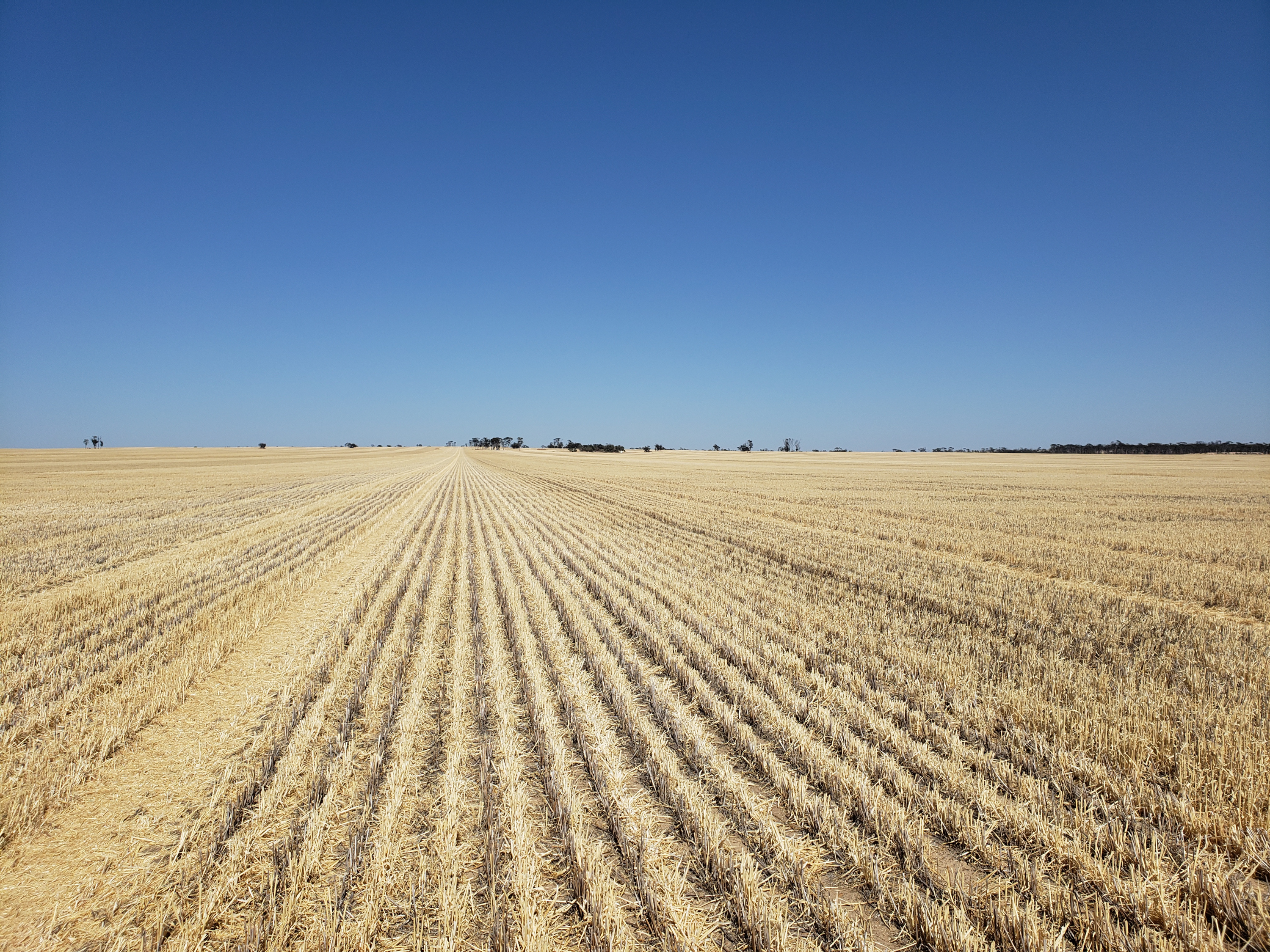Evaluating Chaff Lining for Weed Control in Dryland Crops

For weed scientists and growers, Western Australia is a cautionary tale. Herbicides failed, resistant weeds spread unchecked and non-chemical control methods had to be developed on the fly to keep the grain industry in business.
As herbicide-resistant weeds spread in the United States, researchers are trying to adapt some of the lessons learned in Australia here at home – before the situation gets as dire.
Colorado State University weed scientist Todd Gaines is one of those researchers. He did a post-doc in Australia from 2009 to 2011, when some of the alternate methods of weed control were first being analyzed.
“We were doing the first evaluation of the Harrington Seed Destructor, and evaluating other methods of removing weed seeds after harvest – windrow burning, bailing chaff and chaff carts,” he said.
Each of those methods can be effective, but each has drawbacks. The Harrington Seed Destructor – an impact mill towed behind a combine that pulverizes seeds – is still rare and expensive in the United States. Burning has environmental and safety considerations, and hauling chaff out of fields is time-consuming and expensive.
“Ideally, what you want to do is keep the crop residue in the field but destroy the weeds without burning or carrying it out,” Gaines said.
The method Gaines and several cooperators are testing to do just that is chaff lining – mechanically gathering chaff into narrow strips using a piece of equipment towed behind a combine known as a chaff deck.
“It’s a much less-expensive option,” he explained. “Weed seeds captured in the chaff environment are more prone to predation, more prone to getting wet and germinating without finding their way to soil, or rotting without germinating.”
Gaines’ research incorporates herbicide treatments with the mechanical control of chaff lining.
“Because chaff lining concentrates weed seeds into one narrow strip, growers can direct sprays into one narrow line,” he explained. “It uses less herbicide and is a lot cheaper.”
By reducing the amount of herbicide needed and the cost, growers can also afford to rotate several different products – even more expensive ones – to reduce resistance pressure.
“Managing weeds and managing resistance simultaneously really is IPM,” Gaines said.
The research team bought a chaff deck and is conducting experiments at six field sites in three states in the Central Great Plains, evaluating the effectiveness of chaff lining in winter wheat, corn and grain sorghum. Early results show it might be most appropriate in wheat.
“The wheat trials show a lot of success,” explained Eric Westra, another Colorado State University weed scientist. “But in wheat there’s also a lot more up-front information available we were able to fine-tune to our cropping systems and conditions in eastern Colorado.”
Corn and sorghum had some setbacks.
“Expanding into the other cropping systems was a lot of work,” Westra said. “We did get chaff lines in corn and sorghum fields, then 60 mile-per-hour winds blew through and the chaff was just gone.”
Despite the field trials showing promise in wheat – and Westra and others are quantifying benefits now – grower interest in testing the system has been underwhelming.
“We’ve approached a lot of farmers and no one is willing to bolt on the chaff deck and try it out so far,” Gaines said. “We’ve had no takers.”
Westra said time is the biggest reason growers cite for not being willing to trial chaff lining. Because it adds complication and could potentially cause harvest delays, it’s not worth the risk.
“The turnaround time between harvesting and planting next year's crop is typically less than a month and they need to switch from harvesting and grain storage over to field prep for planting,” Westra said. “Also, they want to harvest all their acres quickly once the optimum crop maturity and moisture levels are met – before the weather changes.”
Only time will tell if the weeds themselves change growers’ risk-reward calculations.
“This is a proactive management tool and growers know resistance is an issue, but they’re not out of options,” Gaines said. “In Australia, they were. They got to the point they had no tools.”
The research is supported by the Crop Protection and Pest Management Program administered by the U.S. Department of Agriculture’s National Institute of Food and Agriculture.